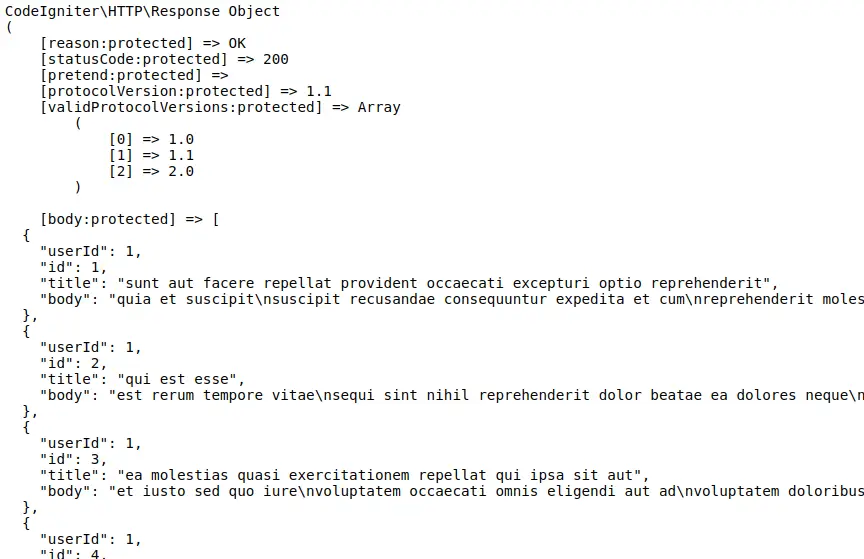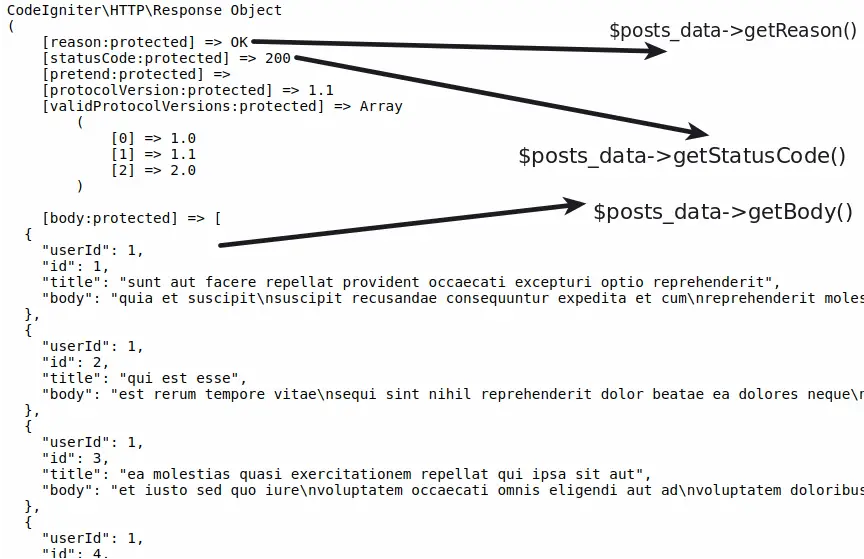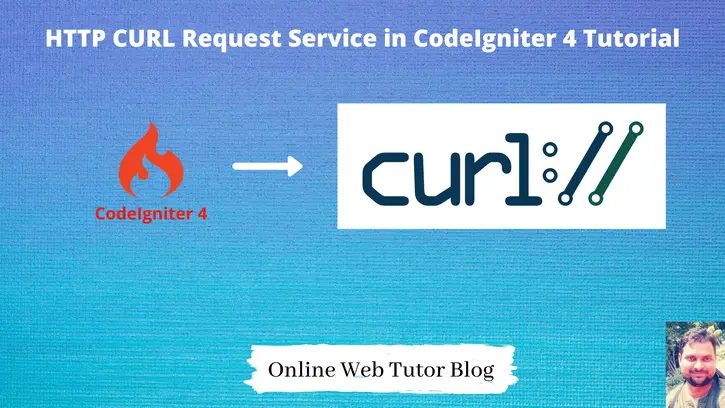Inside this article we will see the concept of using HTTP CURL service in CodeIgniter 4. In CodeIgniter 4 it’s a class means CURL request service is a CURLRequest Class.
The cURL stands for ‘Client for URLs‘, originally with URL spelled in uppercase to make it obvious that it deals with URLs. Since curl uses libcurl, it supports a range of common internal protocols, currently including HTTP, HTTPS, FTP, FTPS, GOPHER, TELNET, DICT, and FILE.
This article is bit very interesting to learn about HTTP CURL request service. We will cover the topic CURL request service in CodeIgniter 4.
Learn More –
- CodeIgniter 4 Models with Multiple Database Connection
- Codeigniter 4 Multi Auth User Role Wise Login
- CodeIgniter 4 Multiple Databases And Connection Groups
- CodeIgniter 4 Pagination Service or Library
Let’s get started.
CodeIgniter 4 Installation
To create a CodeIgniter 4 setup run this given command into your shell or terminal. Please make sure composer should be installed.
composer create-project codeigniter4/appstarter codeigniter-4Assuming you have successfully installed application into your local system.
Environment (.env) Setup
When we install CodeIgniter 4, we will have env file at root. To use the environment variables means using variables at global scope we need to do env to .env
Either we can do via renaming file as simple as that. Also we can do by terminal command.
Open project in terminal
cp env .envAbove command will create a copy of env file to .env file. Now we are ready to use environment variables.
Enable Development Mode
CodeIgniter starts up in production mode by default. You need to make it in development mode to see any error if you are working with application.
Open .env file from root.
# CI_ENVIRONMENT = production
// Do it to
CI_ENVIRONMENT = developmentNow application is in development mode.
What is CURLRequest Class?
The CURLRequest class in CodeIgniter 4 is a lightweight HTTP client based CURL that allows us to communicate to other websites and web servers. It can be used to get the contents of a webpage, retrieve image, or communicate with an API, many other things.
Load CURLRequest in Application
The library can be loaded either manually or through the Services class.
$curl = \Config\Services::curlrequest();
OR
$curl = service('curlrequest');Call API Using CURL Request
We will use a Fake api to fetch data from it.
API URL – https://jsonplaceholder.typicode.com/posts, Click here.
<?php
namespace App\Controllers;
class Home extends BaseController
{
public function index()
{
$curl = service('curlrequest');
// OR $curl = \Config\Services::curlrequest();
$posts_data = $curl->request("get", "https://jsonplaceholder.typicode.com/posts", [
"headers" => [
"Accept" => "application/json"
]
]);
echo "<pre>";
print_r($posts_data);
}
//...
}
While calling API, it’s your choice to pass headers with it. It is an optional parameter inside CURL Request method.
When we run, something we will get into output screen.

More about CURL Request Service
CURLRequest Class is responsible for this CURL service in CodeIgniter 4.
Here is the path of CURLRequest Class,
/vendor/codeigniter4/framework/system/HTTP/CURLRequest.phpInside this class file, you will get all about the available methods which we can use from this service.
$posts_data = $curl->request("get", "https://jsonplaceholder.typicode.com/posts", [
"headers" => [
"Accept" => "application/json"
]
]);
In this code, we can see we have used request method of this class.
Now, go to class file and search for request method. You will get something –
public function request($method, string $url, array $options = []): ResponseInterface
{
//...
}
Also, we have get() method into it.
<?php
namespace App\Controllers;
class Home extends BaseController
{
public function index()
{
$curl = service('curlrequest');
// OR $curl = \Config\Services::curlrequest();
$posts_data = $client->get("https://jsonplaceholder.typicode.com/posts", [
"headers" => [
"Accept" => "application/json"
]
]);
echo "<pre>";
print_r($posts_data);
}
//...
}Available Methods of CURLRequest Class
These are many methods provided by class which we can use inside application. Here we few methods are –
- request()
- get()
- delete()
- head()
- patch()
- post()
… many others also available.
CURLRequest Class – Output Methods
Output Methods –
- To get Reason – getReason()
- To get Status code – getStatusCode()
- Get Response Body – getBody()
These all methods are available inside CURLRequest Class.

<?php
namespace App\Controllers;
class Home extends BaseController
{
public function index()
{
$client = \Config\Services::curlrequest();
$posts_data = $client->get("https://jsonplaceholder.typicode.com/posts", [
"headers" => [
"Accept" => "application/json"
]
]);
echo $posts_data->getReason();
echo $posts_data->getStatusCode();
print_r($posts_data->getBody());
}
//...
}We hope this article helped you to learn HTTP CURL Request Service in CodeIgniter 4 Tutorial in a very detailed way.
If you liked this article, then please subscribe to our YouTube Channel for PHP & it’s framework, WordPress, Node Js video tutorials. You can also find us on Twitter and Facebook.
Read more